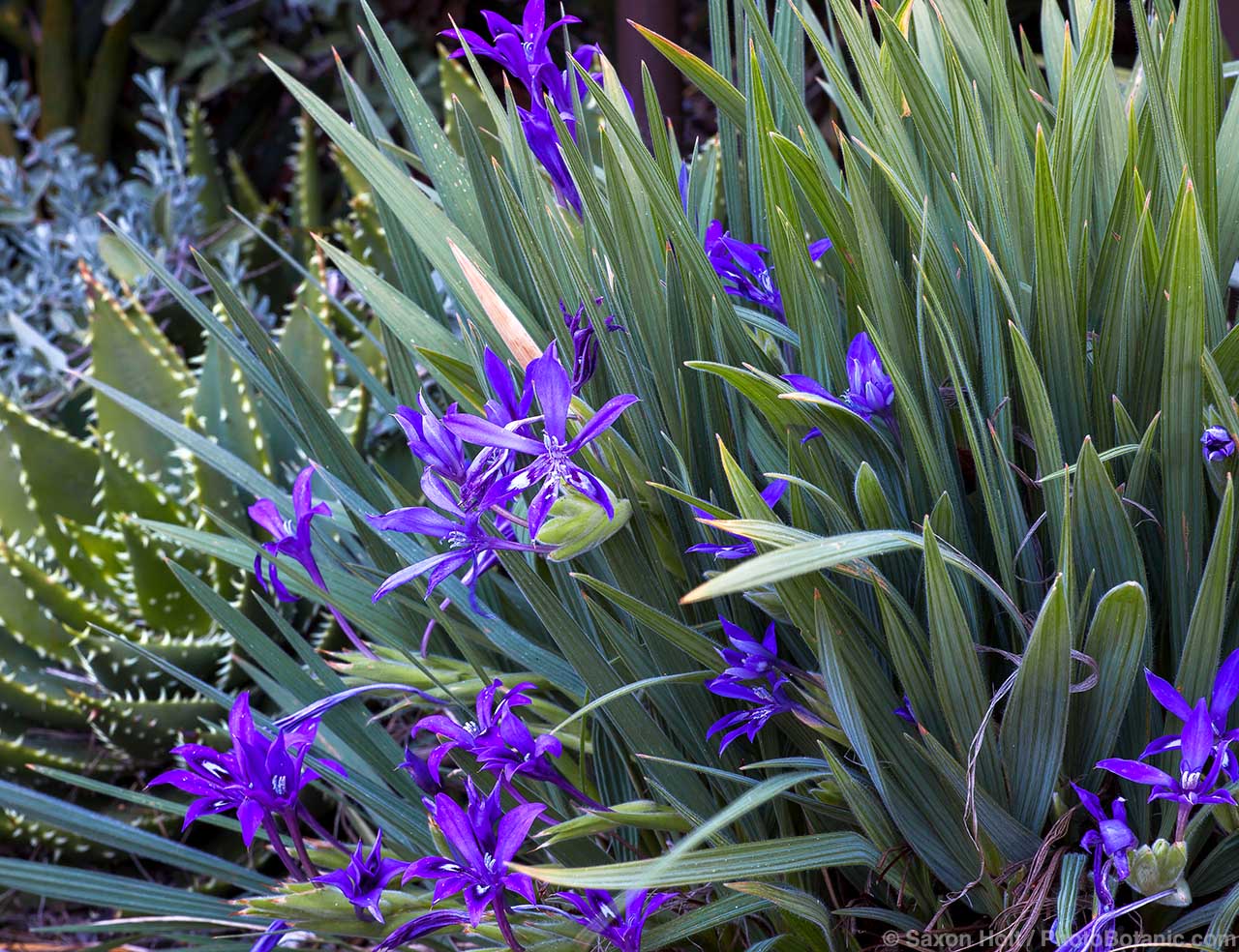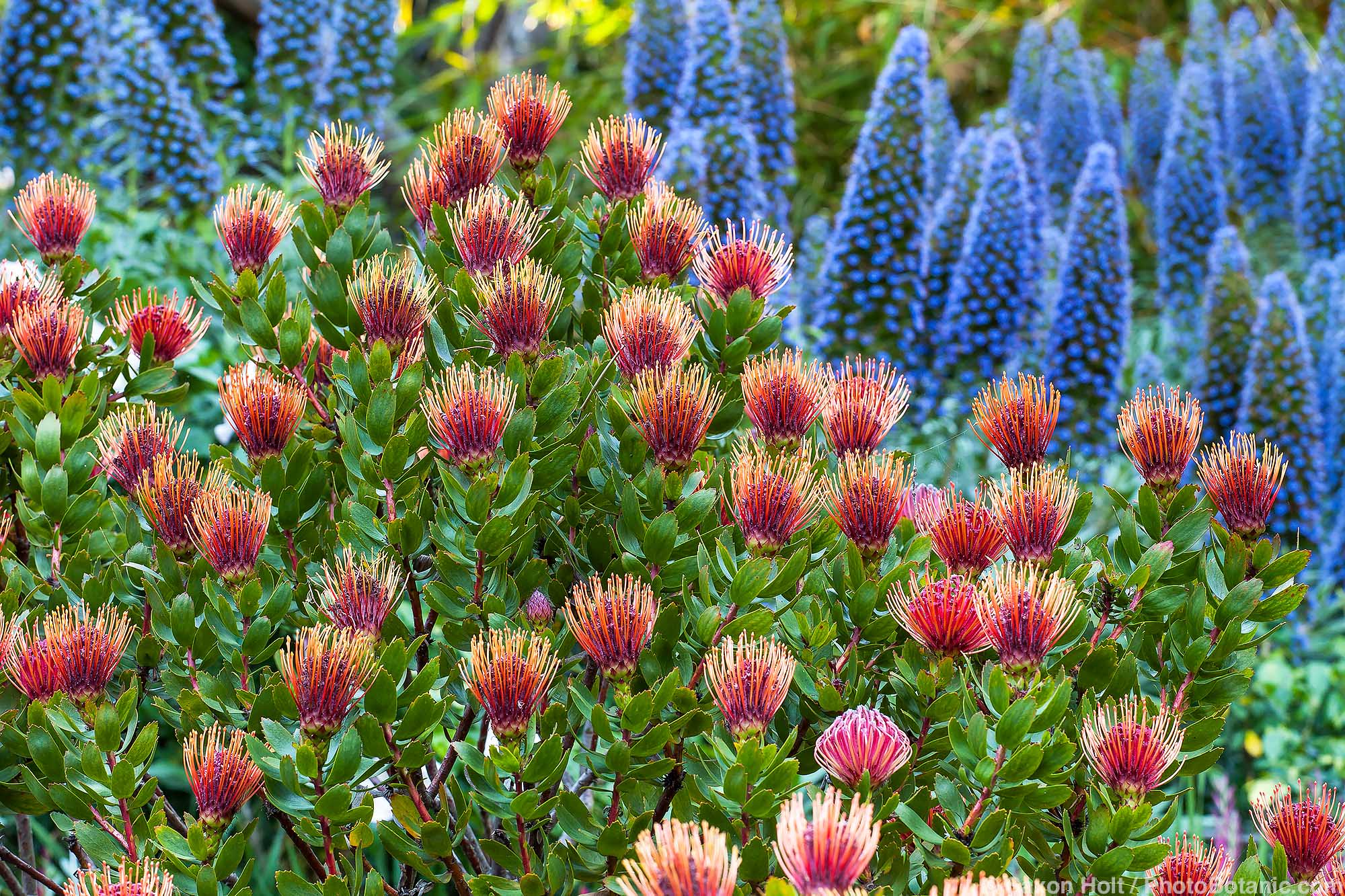Oaks for Small Gardens
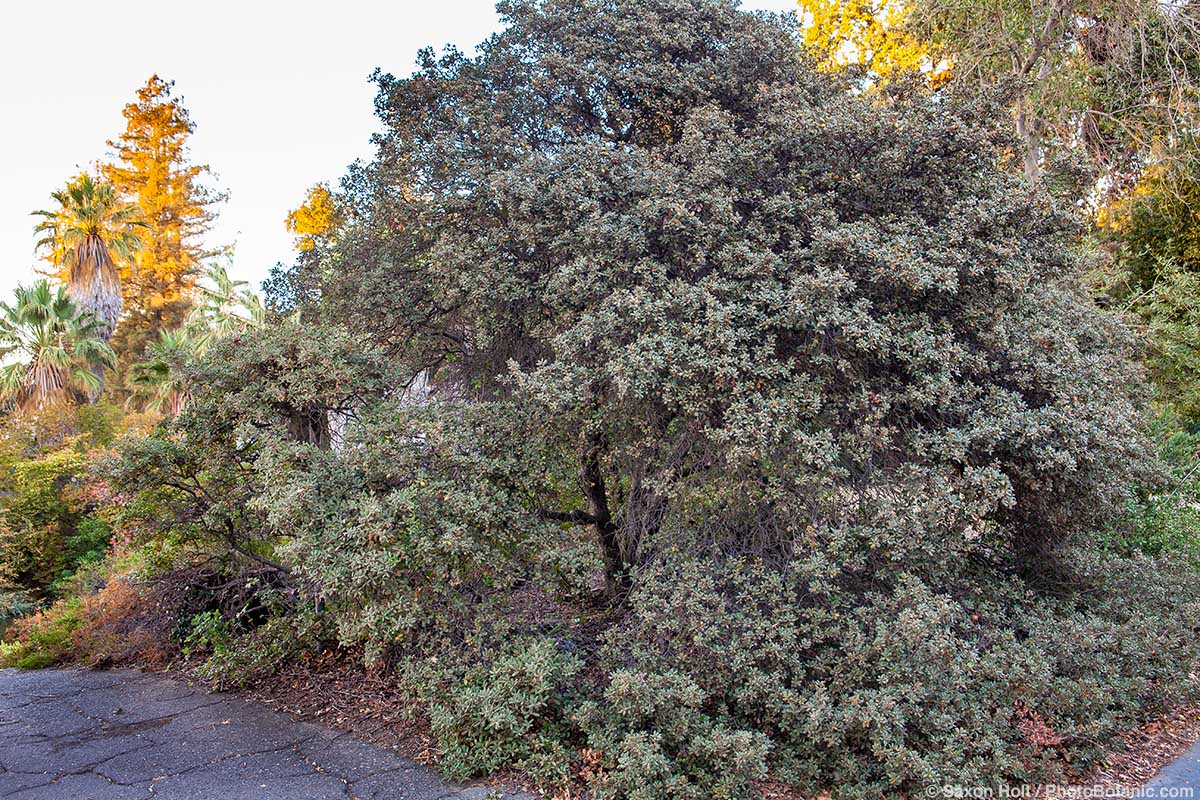
Share This!
Native oaks are larval hosts for more kinds of butterflies than most other plants, and caterpillars are the primary food that nesting birds can feed their young. This makes oaks one of the best choices for supporting butterfly and bird populations and encouraging both to make their homes in your garden.
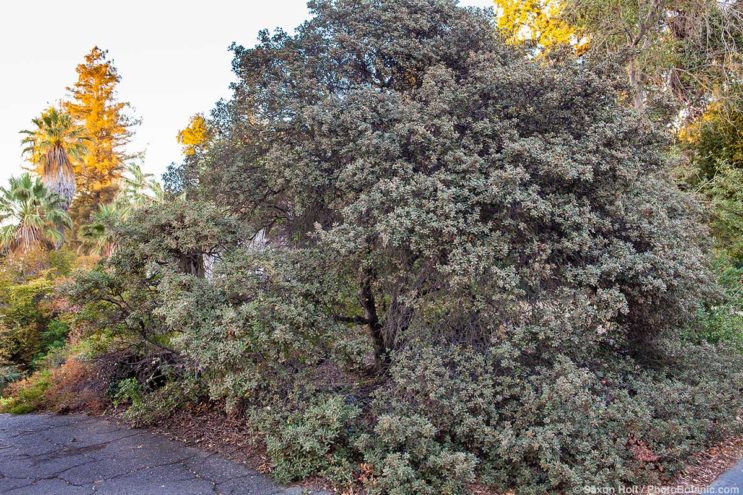
Quercus durata, leather oak
Where does that leave those whose gardens are too small for a full-sized oak? At maturity, most oaks become large to very large trees. California’s valley oak, Quercus lobata, is the largest North American oak, in time reaching 75-100 feet tall and 30-50 feet wide. Coast live oak, Q. agrifolia, can be 40-80 feet tall and often wider than tall.
Fortunately, there are shrubby oaks that fit nicely into small gardens. The key is finding one native to your region, one that local butterflies will recognize as suitable for laying their eggs. In the Mediterranean region, this might be Quercus coccifera, the kermes oak, which is usually a 6- to 12-foot prickly shrub or sometimes a 20-foot tree. In eastern North America it might be Q. prinoides, dwarf chinquapin oak, which usually tops out at 12-20 feet tall and wide.
Quite a few shrub-sized oaks are native to summer-dry climates of western North America. The desert-dwelling, spiny-leaved Quercus turbinella, shrub live oak, is 6-12 or sometimes 20 feet tall and 10-12 feet wide. Q. dumosa, Nuttall’s scrub oak, grows slowly to 3-10 feet tall and wider than tall in sandy soils near the coast. Q. berberidifolia, California scrub oak, can be 15-20 feet tall and 15 feet wide and is native to southern California and northern Baja California.
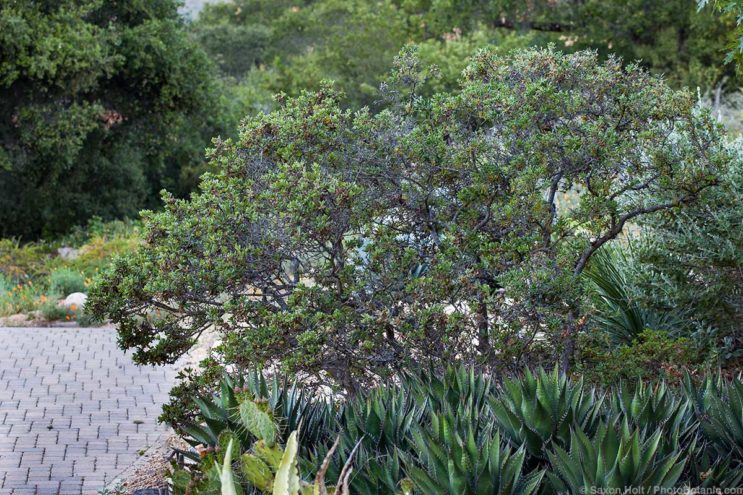
Quercus durata, leather oak, is a slow-growing, mounding shrub 4-10 feet tall and wide. It is native to dry slopes and ridges in chaparral and woodlands of the north and central Coast Ranges of California. Leathery, finely hairy, grayish green leaves, often but not always with spiny margins, are densely held on stiff, wide-spreading branches. Leather oak is best grown in full sun in dry, rocky, low-nutrient soils where summers are hot and winters are mild.
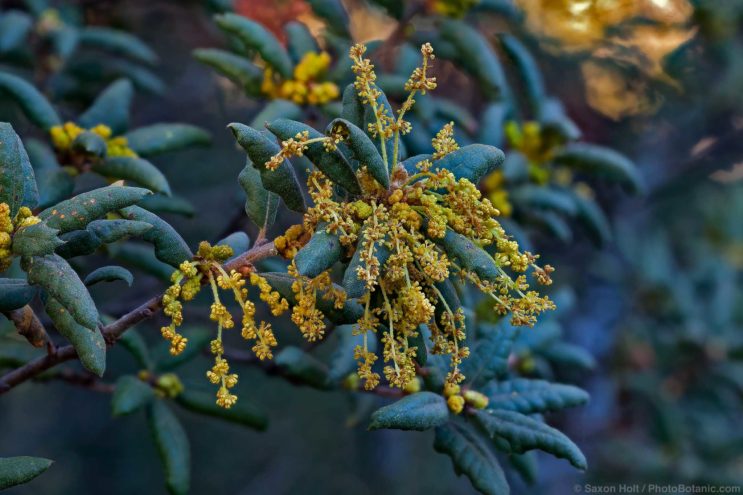
Quercus durata leaves and flowers
Quite a few shrubby oaks are native to various habitats and regions of North America’s west coast. Quercus vaccinifolia is a prostrate or low-growing shrub native to mid- to high elevations of northern and eastern California. Q. sadleriana is a low to mid-sized shrub native to conifer forests at higher elevations in southwestern Oregon and northwestern California.
Quercus palmeri, desert oak, is 10 or occasionally 20 feet tall and native to chaparral at mid-elevations in southwestern California. Q. pacifica, 6-18 feet tall, is native to chaparral on several of the northern Channel Islands and adjacent mainland habitats. Q. john-tuckeri is 7-16 or sometimes 20 feet tall and native to east-facing slopes of central and southern California. Q. cornelius-muelleri is native to foothill woodlands on the western edges of the Colorado Desert in San Diego County, California.
All of these shrubby oaks are host plants for native butterflies and thus good candidates for gardens that support nesting birds. Birds need all the help we can give them in these environmentally challenging times. With a little research and advice from your local native plant society, you likely can find a small to mid-sized oak well suited to your small to mid-sized garden.
Share This!
Related Articles
By: Nora Harlow
By: Nora Harlow
By: Nora Harlow




